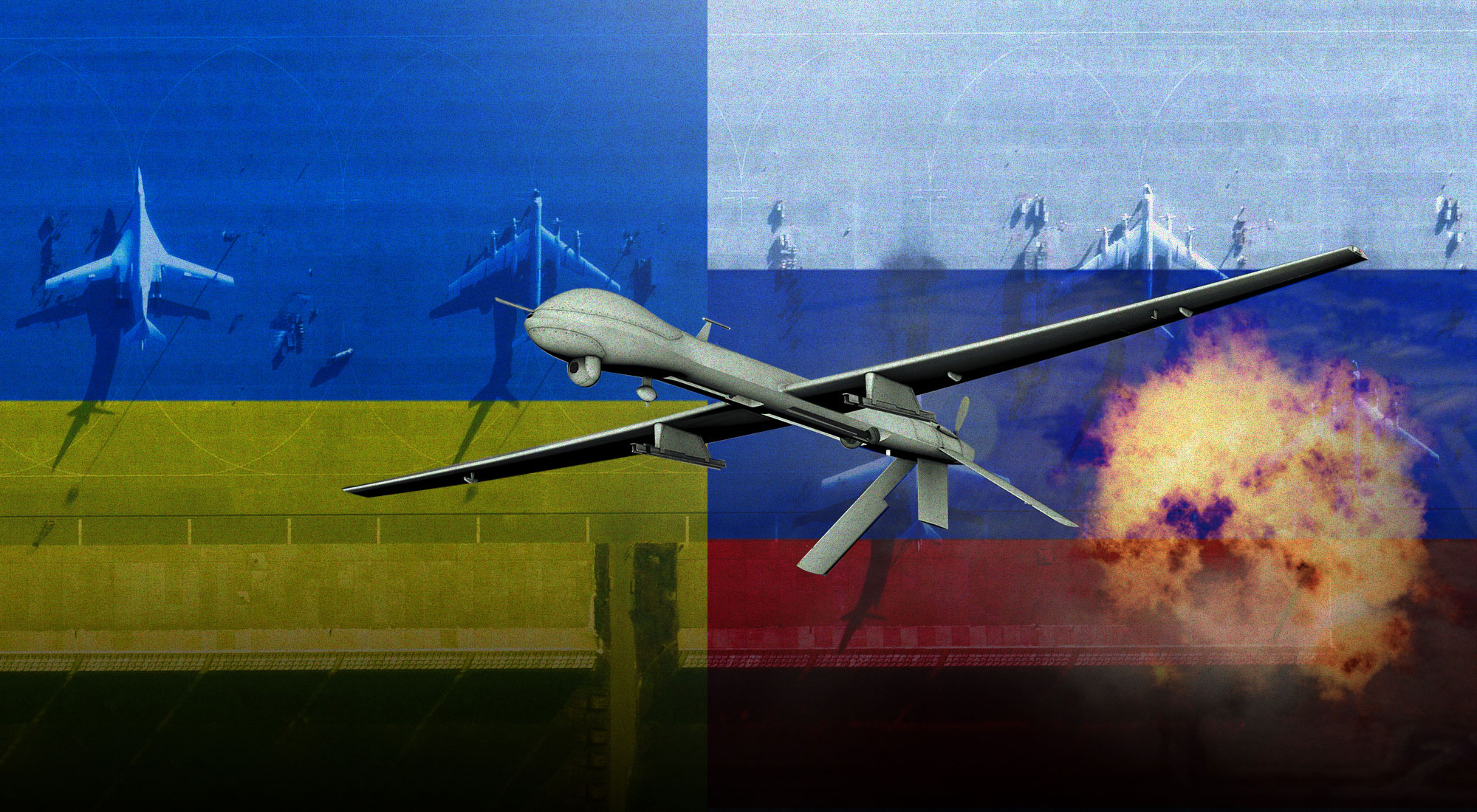One of the key questions on analysts’ lips since the near-territorial defeat of the self-declared ‘caliphate’ across Iraq and Syria has been ‘Who will be the next ISIS?’. Prognosis has ranged from an exodus of cornered foreign fighters to far flung theatres, to a resurgent al-Qaeda retaking the reins of global jihad. However, new research from the Tony Blair Institute’s Global Extremism Monitor demonstrates there is already a broader movement ready to carry on the group’s objectives in different global theatres, with a total of 121 different violent Islamist groups active across 2017.
The Global Extremism Monitor (GEM) tracks incidents of violent Islamist extremism and state efforts to counter it, painting a picture of a global problem affecting over 60 countries and leading to the loss of over 84,000 lives in the year, with 7,841 separate violent attacks recorded.[1] The geographical spread of this problem remains vast, with over half of the violent groups operating outside major conflict zones, and Islamist violence permeating the borders of 18 of the world’s most developed countries to devastating effect.
But as well as capturing the scale of the threat, the monitor also focuses on its ideological character, shedding light on the warped theopolitics underpinning violent Islamist groups’ actions and narratives. Understanding the ideological nuances of extremist violence is often neglected in the policy debate. Building an evidence base will be central to informing long-term strategies to contain the violence.
While ISIS, and to a lesser extent al-Qaeda, might represent the face of global Islamist violence, the dataset paints a picture of a long tail of militant groups with similar aims that receive little attention from the international community.
Groups like the predominantly Uzbek Imam Bukhari Jamaat, fighting for an Islamic state in Syria’s Idlib province before bringing the Caliphate home to the “homeland of Turkestan”. And Jamaat Nasr al-Islam wal Muslimin, a new alliance of jihadi factions in the Sahel, which carried out numerous attacks in four different countries across the region. Or the Philippines’ Abu Sayyaf, founded in 1991 by a returnee from the Afghan jihad, which in 2017 focused a higher percentage of its activity on civilians than al-Shabaab, and carried out more beheadings than ISIS in Libya.
Many of these smaller violent groups, highly localised and conflict-specific, have evolved from separatist insurgencies against local governments, towards ideological convergence with a broader global Islamist cause.
Such factions are not part of a coordinated jihadi network, but a closer analysis of some of the 25 most prominent violent Islamist groups operating today in five regions across the world reveals an alignment of interests and objectives across diverse geographies. Many of these groups are not Salafi-jihadi like ISIS and al-Qaeda, who call for a literalistic return to the perceived Islam of the Prophet’s followers. For example, the Ahrar al-Sham does not advocate for an expansionist Islamic state, while Hamas avoids explicit sectarianism. But all of these have two key ideological positions in common, a belief in the restoration of Islamic governance as a religious obligation, and violent opposition to perceived enemies of Islam.
Comparative research on a range of groups’ propaganda, has shown that rival Islamist extremist outfits agree on considerably more than they disagree.[2] As the Global Extremism Monitor says, “violent Islamists all seek a restoration of Muslim dignity through a return to the caliphate, and they believe that violence and intimidation are legitimate methods to overcome perceived enemies of Islam that restrict the success of this project.”
By monitoring and disaggregating the activities of each group, the GEM is able to highlight distinct strategic, and ideological, priorities within this shared world view. While ideology is a unifying thread between groups that vary in size, lethality and location, militants have utilised local grievances and politics to develop their own brands of violent Islamism and priorities vary depending on their environments and context.
Even within the borders of Afghanistan, there are distinctions between the ideas and strategies of the country’s most violent Islamist groups. For decades, the Taliban has been focused on the establishment of an Islamic emirate, for the group a religiously mandated and ordered nationalist governance system, free from foreign unbelievers. Last year, 79 per cent of the group’s attacks targeted security actors – symptomatic of a group that prioritises ousting the current regime and practising governance.
ISIS-Khorasan wages very different violence from the more established Taliban, despite their shared genealogical roots in the Afghan jihad of the 1980s (indeed a large proportion of ISIS fighters in the region have splintered from the Pakistani Taliban). ISIS-Khorasan has more recently emerged in the country, bringing with it a desire for global jihad aimed at killing all non-believers and enemies. The group has imported from its Levantine playbook a determination to eradicate the Shia population, a sectarian ‘innovation’ in the Salafi-jihadi movement that even al-Qaeda opposed, and which has been largely absent from the Afghan conflict up to this point. Twenty-six per cent of all ISIS’ activity in the country was sectarian in 2017. The Afghan Taliban has resisted explicitly engaging in anti-Shia violence, rather presenting itself as a viable and natural leader of all the country’s Muslims.
Diverse Manifestations of Islamist Violence
Such sectarianism manifests itself in a number of different ways across the Global Extremism Monitor, with the 2017 data showing that the world’s most deadly groups were mobilised by distinct forms of sectarian targeting. ISIS has exacerbated historical divides in Iraq to target the country’s delicate sectarian balance, particularly in the capital where more than 70 per cent of all sectarian attacks in the country occurred.
In Pakistan, one of the top ten ‘deadliest’ countries in the Monitor, groups including ISIS, Lashkar-e-Jhangvi, Lashkar-e-Jhangvi al-Alami and Jamaat ul-Ahrar have made minority Islamic sects the subject of their terror. This did not develop in a vacuum; Pakistani society is entrenched with sectarian division. These groups are a violent display of an ideology that drives and feeds off local conflict.
In Nigeria – a country that is split between Christians and Muslims, with areas of extreme poverty and resource scarcity – Boko Haram has justified the killing of all non-believers and those it deems a threat. The group has moulded its ideology to validate a campaign that was more focused on civilian targets than that of any other extremist group in 2017. It is evidently also driven by an expansionist agenda, with attacks reaching Cameroon and Niger.
Boko Haram, whose name roughly translates as “Western education is forbidden”, has also systematically targeted educational institutions since 2008. It is not alone in prioritising such violence. In the Sahel, Ansarul Islam attacked schools in Mali last year, including burning down a primary school and assassinating teachers. These groups embody a binary ideology that derides secular teaching, exploiting a region that has the world’s highest rates of educational exclusion. But the group is not ideologically unified, with a growing split between different factions, in part rooted in a disagreement over the role of women in carrying out acts of extremist violence.[3] Islamist militants may share common principles, but they adapt their strategic aims in line with local and historical politics.
ISIS affiliates in Egypt have persecuted Coptic Christians, inflaming local tensions between the country’s Muslim and Christian populations. The GEM recorded 97 Copts killed in 18 ISIS attacks last year. The group has described these Christians as its “favourite prey,” threatening to eliminate all “worshippers of the cross.”
Al-Shabaab has also used its resources to kill Christians, focusing this violence on northern Kenya. While many Islamist extremists would identify a desire to harm non-Muslims and espouse hatred for Christians, not all ensured it was a key tenet of their strategy and ideology.
But the Global Extremism Monitor reminds policy makers that Muslims are by far the greatest victims of Islamist violence. And jihadists also focus their ideological violence internally on vulnerable populations in areas under their control.
Islamist groups’ use of executions also provides a grim insight into their principles. Twenty-one Islamist extremist groups in 15 countries carried out executions in 2017, according to the GEM. But it was ISIS in Syria and Iraq that was most committed to a programme of corporal punishment. In 2017, at least 1,568 people were executed by the group in Syria and Iraq alone. Extreme retribution became a fundamental element of the group’s brutal exercise in state-building. ISIS’s prolific use of punishment is based on literalist interpretations of sharia law that has been unmatched in frequency and brutality.
Even the type of violence that groups publicly identify with differs greatly. Islamist militants have controlled the narrative surrounding their violence in a way that demonstrates key differences between them. In October last year, a suspected al-Shabaab attack that killed 587 people was not claimed by the group. A bomber targeting a government building inadvertently exploded near a fuel tanker, which the group was unlikely to foresee. Al-Shabaab considers itself a viable and legitimate state ruler and so disassociates from attacks that kill scores of civilians.
In contrast, ISIS was quick to claim an attack in Las Vegas that killed 58 people in the same month last year. Subsequent investigations did not establish any formal ties. The group displayed its desire for global, far-reaching jihad and a fixation on the ‘Far Enemy’ in the West.
Groups have even condemned violence that is deemed to contradict their own priorities and interpretations of Islamist extremism. In November 2017, ISIS killed hundreds in a sectarian attack on a Sufi mosque in Egypt. Other Islamist militant organisations publicly denounced the violence. Jund al-Sham said the assault had been “a great sin and transgression to violate the sanctities of Muslims”.
Both the violence on the ground and the way a group projects itself offers an insight into the varying priorities Islamist militant groups. The data on global extremist violence shows that seemingly homogenous violent Islamist extremist landscape is clearly diverse and varied, once the actions and words of groups are disentangled and scrutinised, even though they share a broad ideological framework.
A Fragmenting Global Picture
Violent Islamist extremism is not a new problem, and many of the groups tracked in the Global Extremism Monitor can trace their origins back 30 or 40 years. However, there has been an exponential rise in the number of violent Islamist factions globally in the past decade. Research in 2014 from RAND Corporation shows a sixteen-fold expansion in the number of Salafi-jihadi groups over the preceding 25 years.[4] And this was the before ISIS’ declaration of a ‘caliphate’ and establishment of a network of global affiliates.
In a year that saw the recapture of ISIS’s twin ‘capitals’ of Raqqa and Mosul, global Islamist extremism is undoubtedly in a period of fragmentation, rather than consolidation. But this should not be seen as a decline in the overall purchase and power of violent extremism. Efforts to date have focused too much on defeating specific groups militarily, rather than taking on the resilient networks, charismatic ideologues and underlying conditions that breed militancy.
Whilst the rolling back of ISIS in Iraq and Syria demonstrates the (eventual) success of an international mobilisation against Islamist violence, the 79-country strong Global Coalition Against ISIS shows few signs of widening its focus to confront the broader violent Islamist threat. Efforts to deal with individual groups in separate campaigns are necessary, yet this will not end the threat of Islamist violence unless it is accompanied by an attempt to tackle the wider movement.
But what does this ‘long tail’ mean for an effective response. More than anything, it shows security approaches will only slow Islamist violence. Stopping it requires a comprehensive long-term strategy, that addresses both the destructive ideology as well as the conditions that breed vulnerability and foment the rise of Islamist violence. Resilience can be bolstered by robust education institutions and practices. Community and religious leaders must be empowered to safeguard their populations. Development must run alongside military measures; ensuring the conditions that allow extremists to thrive are tackled.
While global spend on hard counter-terrorism measures is in the hundreds of billions of dollars, only a tiny fraction of this is focused on soft-power measures that counters and builds resilience to the extremist ideology that unifies these disparate movements.
Alongside these proactive policy initiatives, it is vital to continue developing and refining our understanding of Islamist violence in its diverse global forms. If Islamist extremism is to be defeated, it must first be understood. More research is required to shed light on the drivers of support for Islamist extremism, but also mapping its interrelationship with other structural factors and forces, including globalisation, conflict and governance.
From ISIS’s persecution of Coptic Christians in Egypt, the Taliban’s pursuit of power in Afghanistan, Boko Haram’s violent campaign against civilians to the sectarian fuelled brutality in Pakistan – Islamist extremists have moulded localised campaigns that are based on a corrupt understanding of religion. The narratives behind each group and location are unique, but stem from a broader and more resilient ideology. Understanding this interplay between a global movement and local dynamics is a significant undertaking, but will be crucial for addressing the scale of the challenge.
This contribution is part of a series of publications resulting from the “Religious Foundations for Political Violence” research project, undertaken by TRENDS Research & Advisory and the International Centre for the Study of Radicalisation and Political Violence (ICSR), King’s College.
Endnotes
[1] Tony Blair Institute for Global Change, “Global Extremism Monitor: Analysis of Incidents of Violent Islamist Extremism Across the Globe,” available at https://institute.global/insight/co-existence/collections/global-extremism-monitor.
[2] Emma El-Badawy, Milo Comerford, Peter Welby, Inside the Jihadi Mind: Understanding Ideology and Propoganda, Tony Blair Institute for Global Change, October 2015, available at https://institute.global/insight/co-existence/inside-jihadi-mind-understanding-ideology-and-propaganda.
[3] Rachel Bryson and Audu Bulama Bukarti, “Boko Haram’s Split on Women in Combat,” Tony Blair Institute for Global Change, 17 September 2018, available at https://institute.global/insight/co-existence/boko-harams-split-women-combat.
[4] Seth G. Jones, A Persistent Threat: The Evolution of al Qa’ida and Other Salafi Jihadists, RAND Corporation, 2014, available at https://www.rand.org/content/dam/rand/pubs/research_reports/RR600/RR637/RAND_RR637.pdf.








